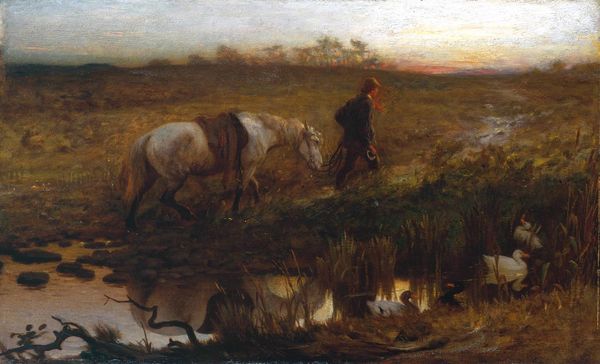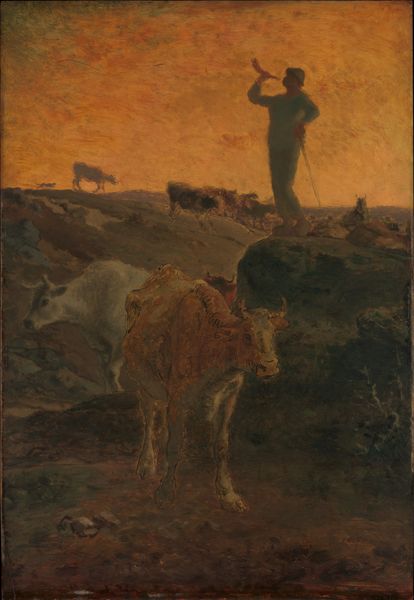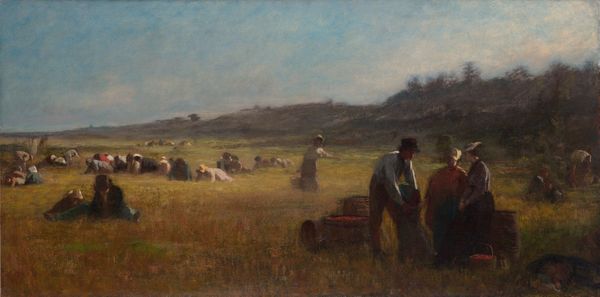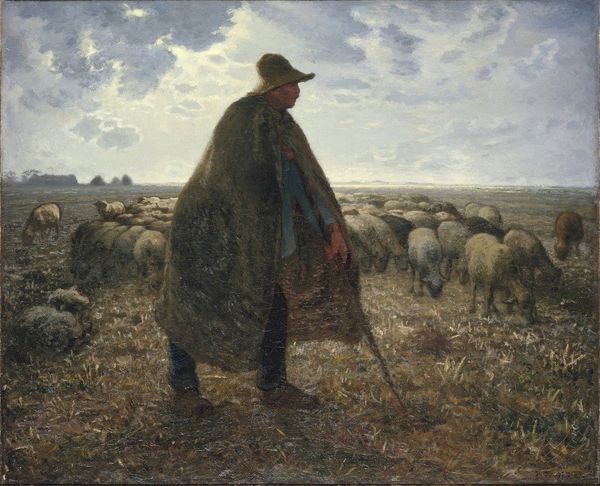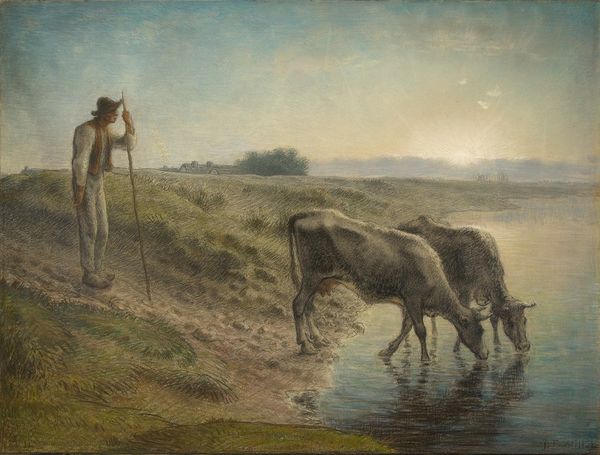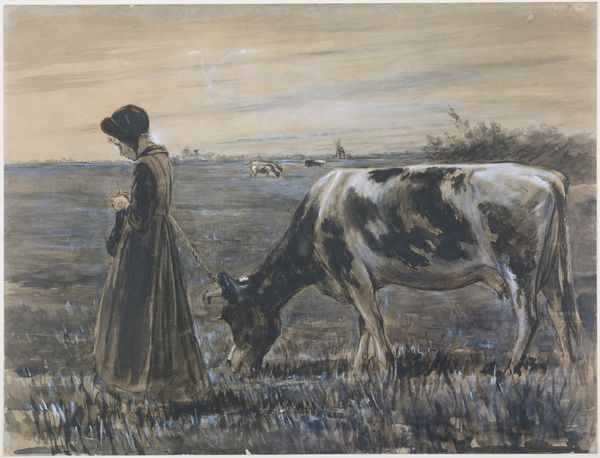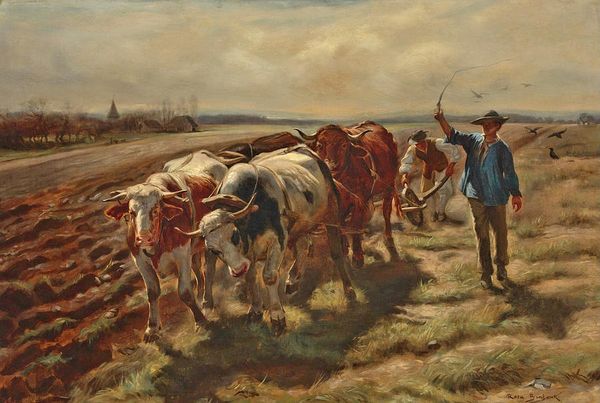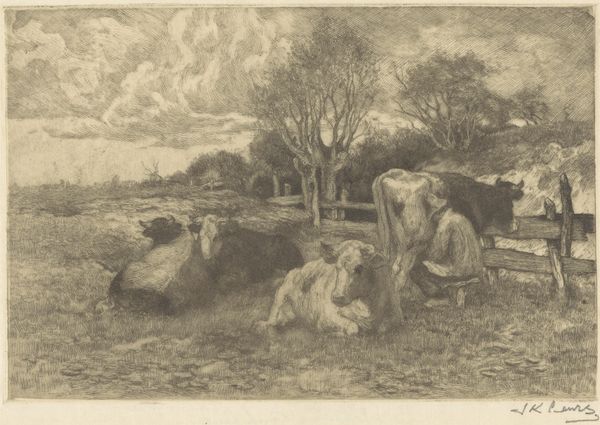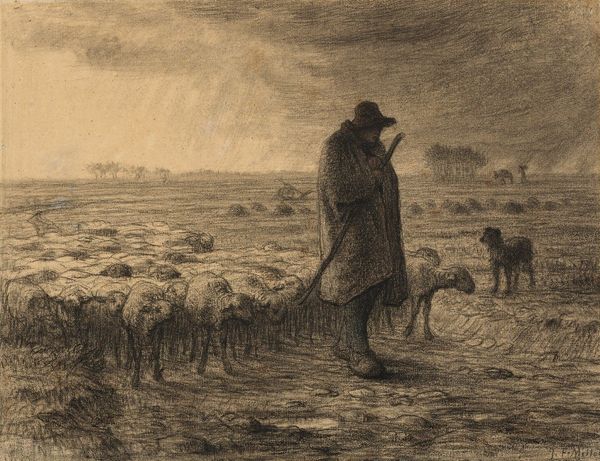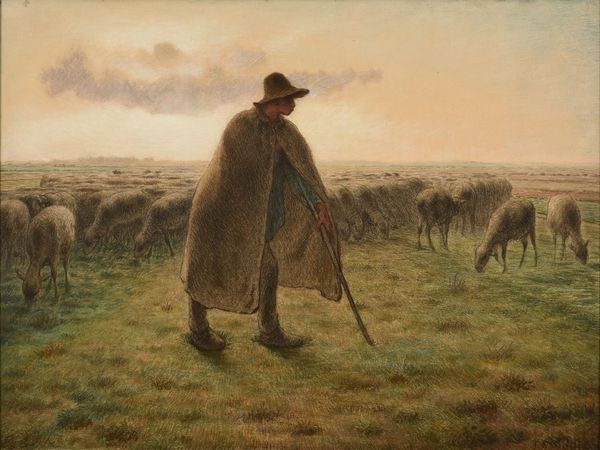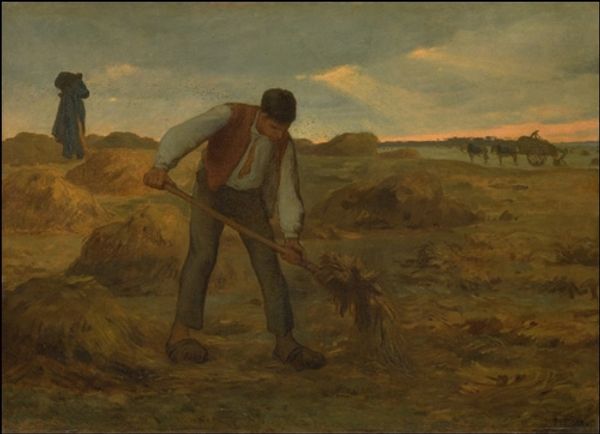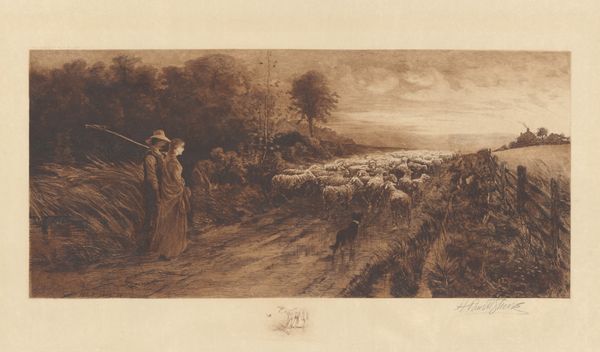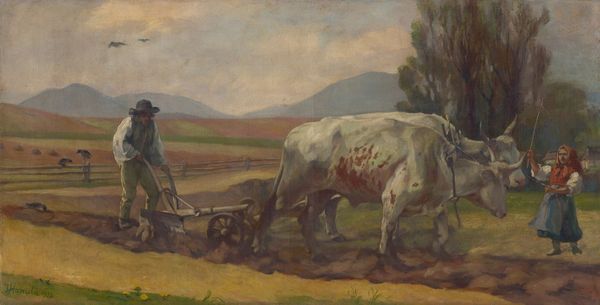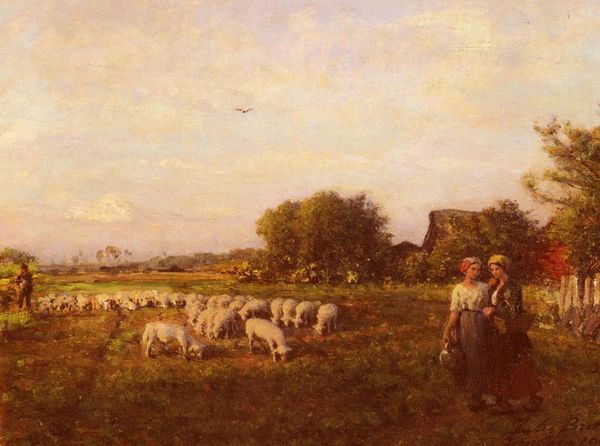
Copyright: Public Domain: Artvee
Curator: A truly evocative composition. There's an unmistakable stillness in this work, a calmness underscored by the darkening sky. Editor: Indeed. We're looking at "Calling Home the Cows," a charcoal and pastel drawing created around 1866 by Jean-François Millet. It presents a scene of rural labor as the day winds down. Curator: Note the strategic use of line—the almost imperceptible charcoal strokes defining the herd against that luminous sunset. Millet's skill here showcases a masterful economy of means. The drawing doesn’t give us much detail. And yet, through skillful compositional elements, we find a compelling narrative of rustic life and nature’s grandeur. Editor: I'd suggest that the drawing highlights the symbiotic relationship between the peasant class and their environment during a period of rapid industrial change in France. Millet was known for idealizing peasant life. Although romanticized, these depictions also reflect a socio-political awareness by reminding viewers of an important population left out from conversations around progress. Curator: Ah, but do you see the structure created by that central figure on the rock? He functions almost as a linchpin, anchoring the visual weight of the cattle below to the atmospheric sky above. Millet also made a clear visual hierarchy when choosing the level of detail for foreground elements vs. the atmospheric background, thus organizing the information within the frame. The shepherd's raised hands become more than just calling. Editor: In that regard, one might even interpret the raised hands as an echo of agrarian activism at the time—a subtle gesture embedded within a largely conservative genre. Many saw paintings that elevated the peasantry as statements about the status of rural populations who felt invisible. It might seem subtle, but even landscape art can suggest more complicated meanings. Curator: Perhaps. Though to read social critique directly into this exquisite play of light and form might diminish the sheer aesthetic pleasure one derives from the piece. Regardless, it seems that we can both recognize that this drawing invites us to appreciate not only the visual harmony within, but the context surrounding its creation as well. Editor: A fitting way to sum up the nuanced layers embedded within Millet's artwork.
Comments
No comments
Be the first to comment and join the conversation on the ultimate creative platform.
